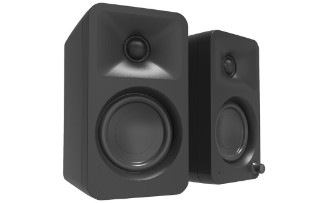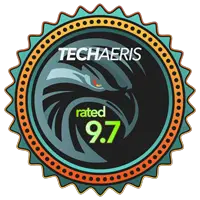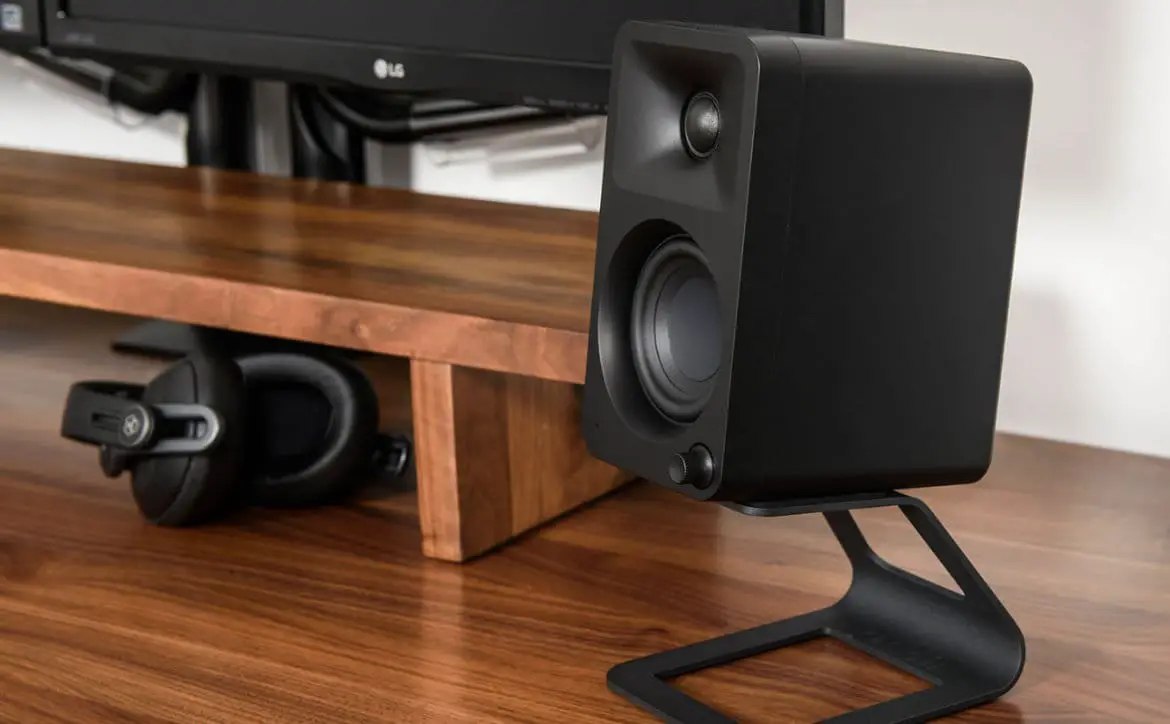
I have been using the Harman Kardon SoundSticks 4 since 2021 as my desktop sound solution. Those speakers have been good to me and I think they are some of the better speakers on the market. But they are getting older and the subwoofer takes up a lot of desk space. So when I was asked if I would review the Kanto ORA desktop reference speakers, I thought, why not? They don’t look that much bigger than the SoundSticks, and they don’t have a subwoofer that takes up 15% of my desk.
Estimated reading time: 7 minutes
I haven’t had a Kanto product in for review since 2019 and that was another reason to take a look at the Kanto ORA desktop reference speakers. Desktop speakers are an important part of my workflow as a content creator and media consumer myself. My last Kanto experience was a good one, so I thought, let’s see what the company is up to these days! Let’s jump into the full review of the Kanto ORA desktop reference speakers.
Table of contents
The Quick Take
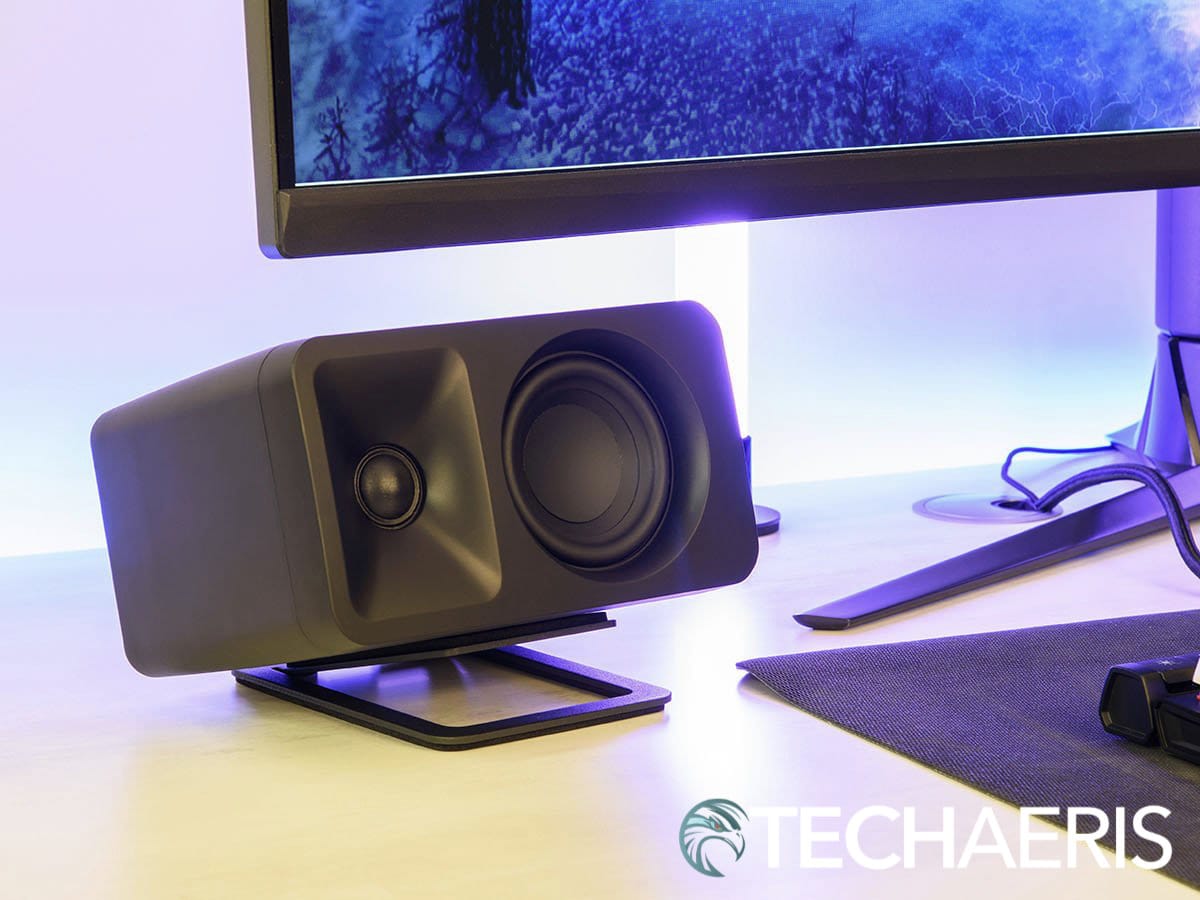
When you first unbox the Kanto ORA speakers, the first thought might be, these seem not worth $349. They take up a small footprint, are lightweight, and kind of remind you of a pair of ’90s Altec-Lansing speakers we all used to want back then.
But once you plug them in, especially via USB-C, then you realize the power that is packed inside these units is phenomenal.
These are very much worth your $349 if you’re a content creator or even just a content consumer. They sound amazing and have a lot of power, making the need to turn the volume up to 10 not needed. The Kanto ORA are simply the best desktop reference speakers I’ve used.
Specifications
The Kanto ORA has the following features and specifications:
- Drivers:
- ¾” Silk Dome Tweeters
- 3” Paper Cone Woofers
- Audio:
- Class D Bi-amplified
- 100 W Peak Power (50 W Total RMS)
- 9 W RMS per Tweeter
- 16 W RMS per Woofer
- Automatic 100 Hz High/Low-Pass Filter
- Frequency Response 70 Hz – 22 kHz
- Inputs:
- RCA Line-Level
- USB-C (24 bit/96 kHz)
- Bluetooth® 5.0
- Outputs:
- Subwoofer
- Measurements and Weight:
- Dimensions (each speaker): 3.9” W x 5.6” D x 6.9” H (10 x 14.1 x 17.5 cm)
- Net Weight (active): 2.1 lb (1 kg)
- Net Weight (passive): 2.1 lb (1 kg)
- ¼”-20 threaded rear mounting hole
- Key Features:
- ORA is bi-amplified and DSP-tuned and delivers near studio grade sound with deep bass
- A crossover network at 100 Hz kicks in automatically when a sub is connected, letting ORA focus on mid and high frequencies.
- There are 3 inputs to cover digital and analog requirements – USB-C to get the best sound from PC or Mac, Bluetooth 5.0, and RCA.
- ORA contains magnetically shielded drivers, so there is no fear of placing ORA directly beside a CRT or high-end PVM.
What’s In The Box
- Kanto Ora
- 4-pin Speaker Connector (6’)
- Power Cord
- 8 x Rubber Feet
- Manual
Design
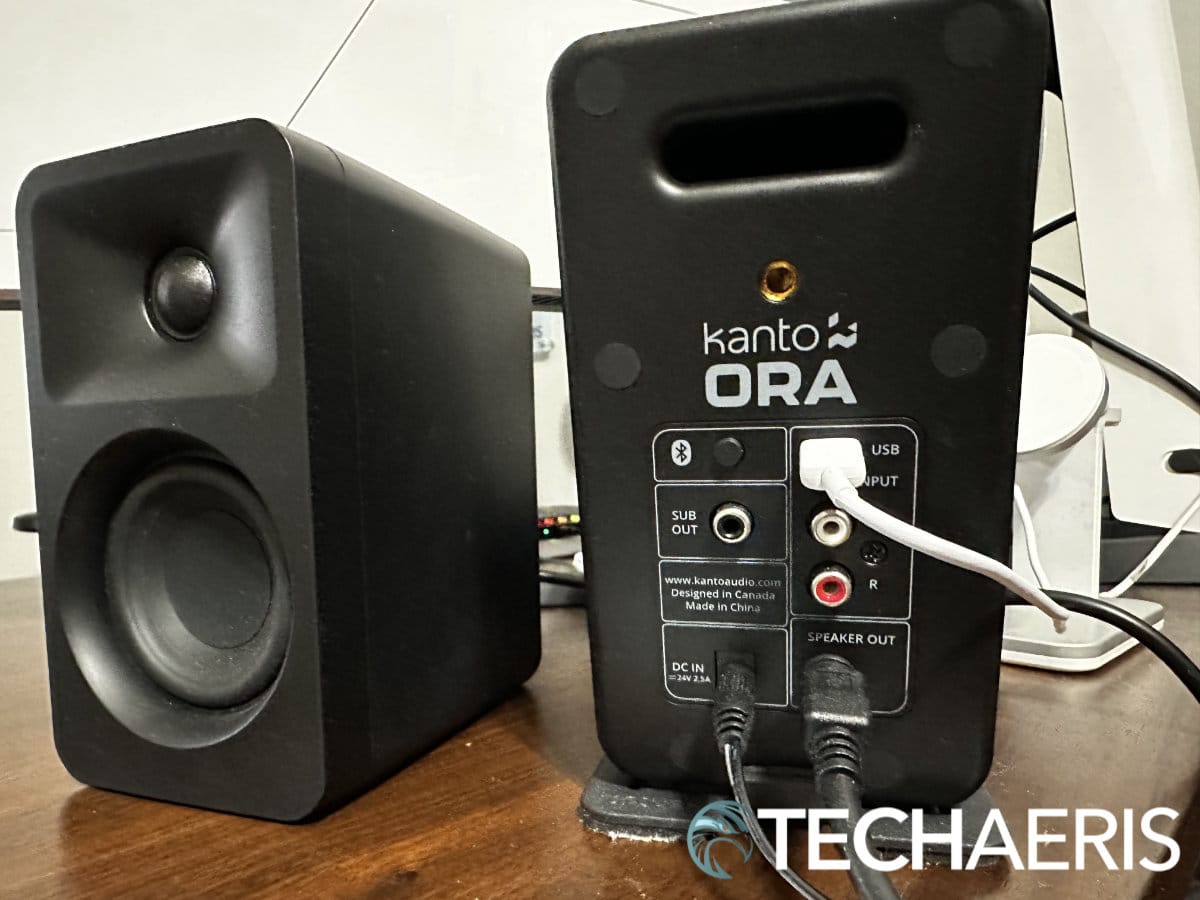
The design language of the Kanto ORA desktop reference speakers is as simple as it gets. These speakers are outfitted in a heavy and premium plastic enclosure. The sides, top, and bottom are all plain with nothing around them.
The fronts of the speakers are open, so you can see the woofer cone and tweeter silk dome. I like this design cue, no cloth mesh to worry about getting dirty. The main speaker has a volume knob and an LED light on the front.
The main speaker has a Bluetooth button, Sub Out port, RCA inputs, USB-C input, power port, and speaker out to connect to the second speaker. The second speaker only has one speaker in port, and both speakers have a bass reflex port in the back.
Kanto also sent along a couple of stand sets, one short stand set, and one taller stand set. These gets the speakers off the desk and cants them a little, and it makes for a nice look. These stand sets are sold separately.
Overall, there really isn’t much to the design of these speakers. They are simple, utilitarian almost. I like the way they look. They certainly don’t look like they sound, and I dig it.
Ease of Use
Setting the Kanto Ora up and using them is uncomplicated. Plug the speakers into each other, plug the power supply into the wall, choose which input to use, and you’re off to the races. No apps, no software, no fuss, just simplicity at its finest.
Overall, these are like old school speakers, nothing complicated here. Maybe Bluetooth is the one thing, but even that is easy to set up.
Sound
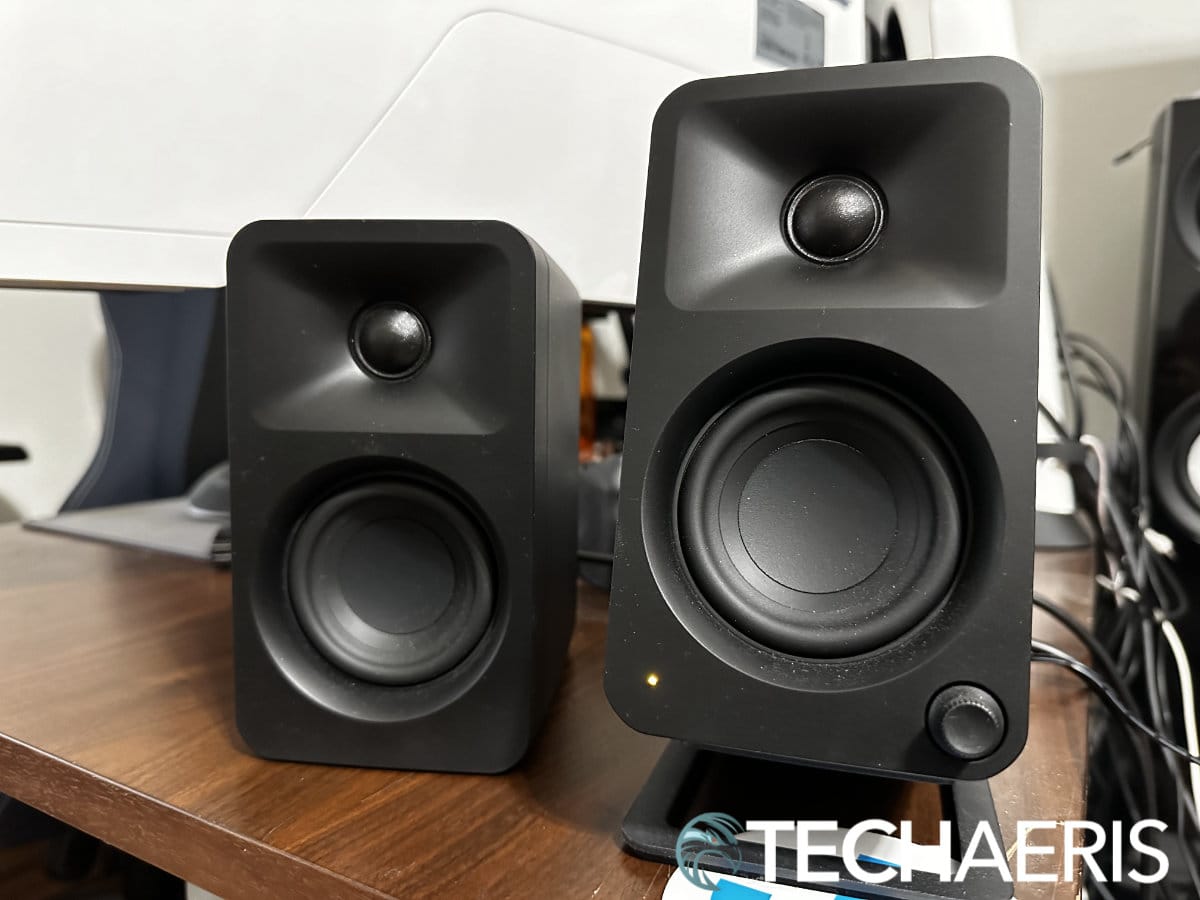
I chose the USB-C connection method on the Kanto ORA to use with my Mac mini. But before we get into sound, I think it’s beneficial for you to read what Kanto has to say about the sound on these speakers.
Kanto ORA is designed for desktop use to enhance your listening in a near-field environment. However, ORA can also be used as a stand-alone stereo speaker system mated with a multitude of audio sources. In either setup, the space between the two speakers and the distance from the rear wall is important. If the speakers are positioned too close or too far apart, stereo imaging will not be fully developed.
Kanto ORA is designed to perform optimally positioned at least 20cm to 25cm from the rear wall for best bass response. Regardless of the setup you choose, keep in mind that rooms vary in shape, size, and furnishing; a certain amount of experimentation may be necessary to determine the most suitable position that delivers the most satisfying sound performance.
Kanto ORA can be placed sideways below a monitor for space-saving measures, but will sound best when upright. To avoid early reflections from the desktop surface, which can degrade audio performance, it is advised to angle ORA towards your listening position. Kanto has several desktop speaker stand options to suit your needs.
Connect the two speakers together as shown below using the supplied speaker cable. Connect the Speaker Out from the active speaker (right) to the corresponding Speaker In on the passive speaker (left). Connect the AC/DC power supply from ORA’s active speaker to your wall outlet. Press the volume control knob to turn it on. Press the knob to select an input source. It cycles through the following inputs depending on what input source was last used.
Kanto
Use the appropriate audio cable to connect your audio source components to your speakers.
- Stereo RCA to Stereo RCA cable
- Stereo RCA to 3.5 mm stereo mini-jack AUX cable
- USB-C to USB-C
- USB-C to USB-C w/ USB-A adapter
- USB-C to USB-A
- The Kanto ORA features a high-quality USB input that supports data streams up to 24-bit/96 kHz resolution. When connecting your computer via USB connection, you bypass the noisy built-in DAC of the computer, and audio signals are instead decoded by ORA.
I chose to use the USB-C method. I did try the AUX and Bluetooth methods of connection, but I found the USB-C connection was far superior in every way.
The Kanto ORA are loud and clear. They produce a neutral soundstage and I can hear subtle nuances in audio when editing video and consuming content. What really surprised me is just how loud these things get. I rarely have the volume any further than 20-25%, and they are loud enough. The vocals and voices are especially excellent sounding.
Overall, the sound of the Kanto ORA is excellent. The company offers a subwoofer you can add to these, but I honestly don’t think it’s needed at all.
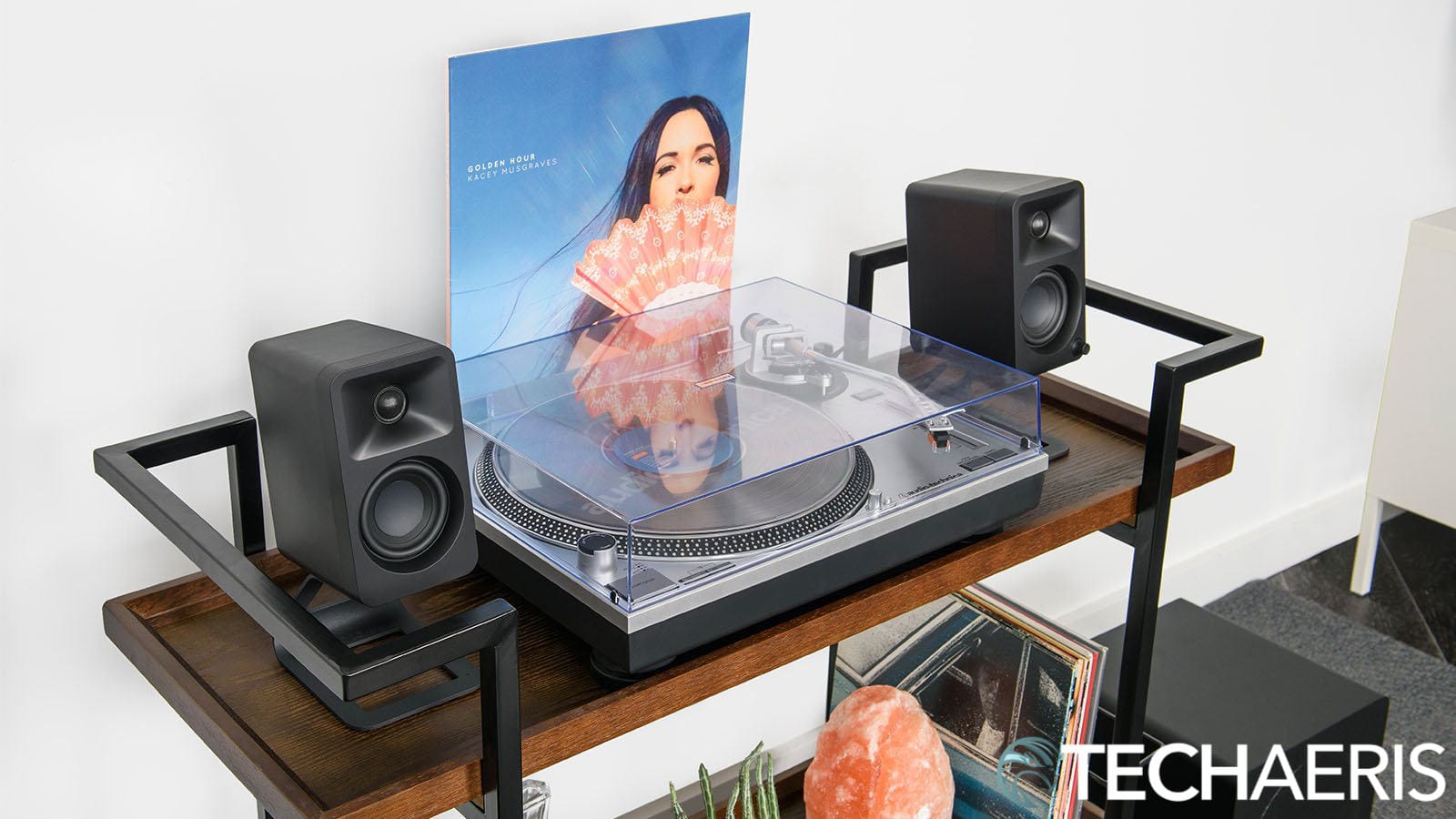
Reception
The Bluetooth reception is excellent. Nothing much to report here. Though the sound isn’t as good as connecting via USB-C.
Price/Value
Priced at $349.99, these little buggers are not cheap. But looks are deceiving because these dudes punch FAR ABOVE their weight class. You will get all the value you’re looking for here. These speakers will be available starting October 30th at B&H Photo.
Wrap Up
The Kanto ORA are fantastic desktop reference speakers. Highly recommended for content creators and pros. Regular consumers will like them too, though the price may be a bit much for them.
In some of our articles and especially in our reviews, you will find Amazon or other affiliate links. As Amazon Associates, we earn from qualifying purchases. Any other purchases you make through these links often result in a small amount being earned for the site and/or our writers. Techaeris often covers brand press releases. Doing this does not constitute an endorsement of any product or service by Techaeris. We provide the press release information for our audience to be informed and make their own decision on a purchase or not. Only our reviews are an endorsement or lack thereof. For more information, you can read our full disclaimer.
Last Updated on March 13, 2024.

